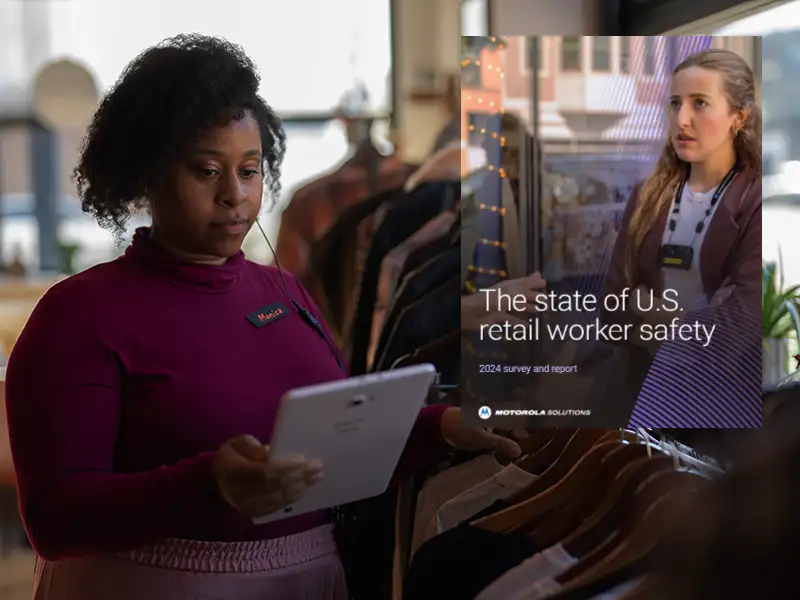
Safety and security remain critical for the retail industry, with one in four workers considering leaving their jobs because of safety concerns.
Despite the well-documented effects of the pandemic and accelerated growth in e-commerce, the retail industry remains the largest U.S. private sector employer, according to a recent report from PricewaterhouseCoopers and the National Retail Federation, responsible for more than one in every four private sector jobs in the country.
Safety and security remain a major focus in and around the industry, the news is littered with reports of state and local police efforts to curtail retail crime. In fact, calling police or other public safety officials to stores is at least a monthly occurrence for many workers (49%), according to an independent research study conducted on behalf of Motorola Solutions, a global leader in public safety and enterprise security. The study found that one in four retail workers (29%) has considered leaving their job because of safety concerns.
Policymakers are starting to listen: California and New York – two of the states with the most retail employees – are among those legislatively addressing organized retail crime and employee security. In addition, bipartisan legislation on this topic was introduced in Congress in 2023. Motorola Solutions is listening too. Its annual survey of more than 1,000 U.S. retail associates and managers aims to better understand their feelings about safety and the security measures that could make a difference. The results provide valuable insights into the everyday realities of retail workers and highlight areas for evaluation and advancement within the sector.
Retail front
How crime is impacting workplace safety
What do retail workers say they see inside their stores? Nearly half of respondents (49%) said that police, EMS or fire officials are called to their stores at least once per month, with 21% saying this occurs on an at-least-weekly basis.
As for crime, petty theft was the most-cited issue respondents have experienced in the last year (66%), followed by grab and run incidents (48%) and threatening or abusive customer interactions (46%). Retail employees continue to report that these incidents are increasing, with more than half (51%) pointing to petty theft as on the rise.
Forty-five percent of respondents said they’re concerned for the safety of shoppers. Crime is likely to blame, as those who reported feeling concerned also reported experiencing more crime overall.
Holiday shopping
Busy season brings extra stress
Retail workers become significantly more concerned about their personal safety at work when thinking about the holiday shopping season. While 74% said that they ordinarily feel safe at work, that figure sharply contrasts with the 57% who said that they are concerned for their personal safety heading into peak shopping season.
More than two-thirds (67% )of those surveyed expect their store to be short-staffed during the holiday season. Since adequate staffing levels significantly impact how safe workers feel, it’s understandable that they are more worried about safety during the busy holiday season when they anticipate being short-staffed. Those who reported going into the holidays understaffed were more likely to report feeling less safe overall.
The top three safety concerns respondents cited around holiday shopping are petty theft and hostile customer interactions, tied at 21%, and grab-and-run incidents at 15%.
Workplace safety
How retailers can help employees feel safer
A majority of respondents said that their stores have video security systems (79%)and alarm systems (59%) in place, which parallels measures retail workers said make them feel safer.
Roughly three in 10 respondents (32%) said that their employer has introduced new security measures in the last year. The changes employers have made line up with some of employees’ concerns: Increased emergency preparedness and response training was the most frequently cited addition (54%). Other top changes include more timely communications about in-store incidents (46%), deploying new or enhanced technology (30%) and increasing staffing (30%). The latter two – along with emergency preparedness – are factors that employees cited as important to increasing their own feelings of safety.



